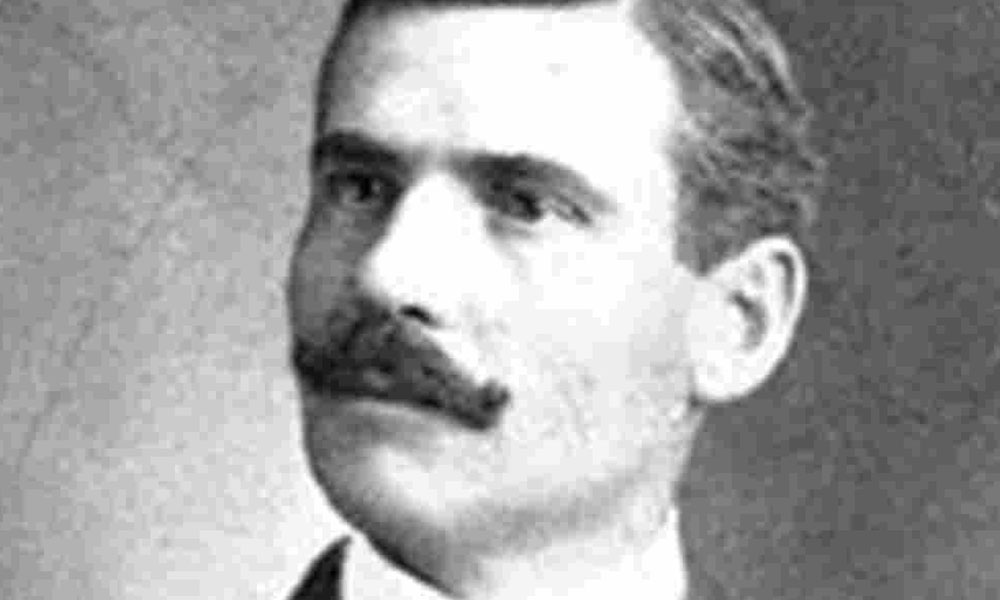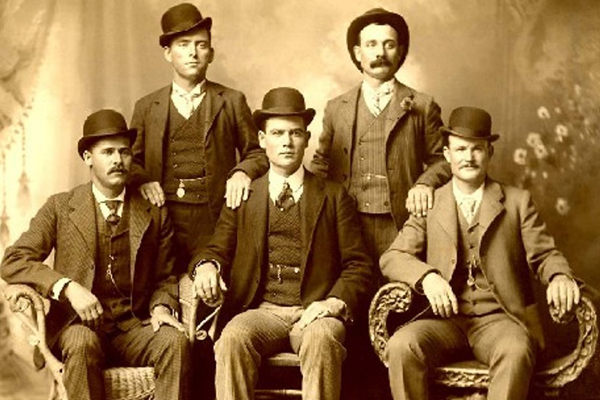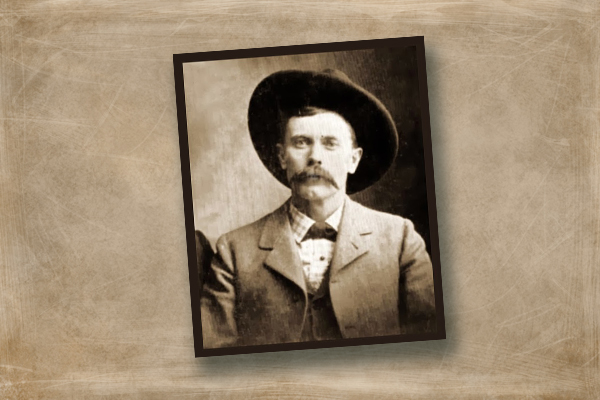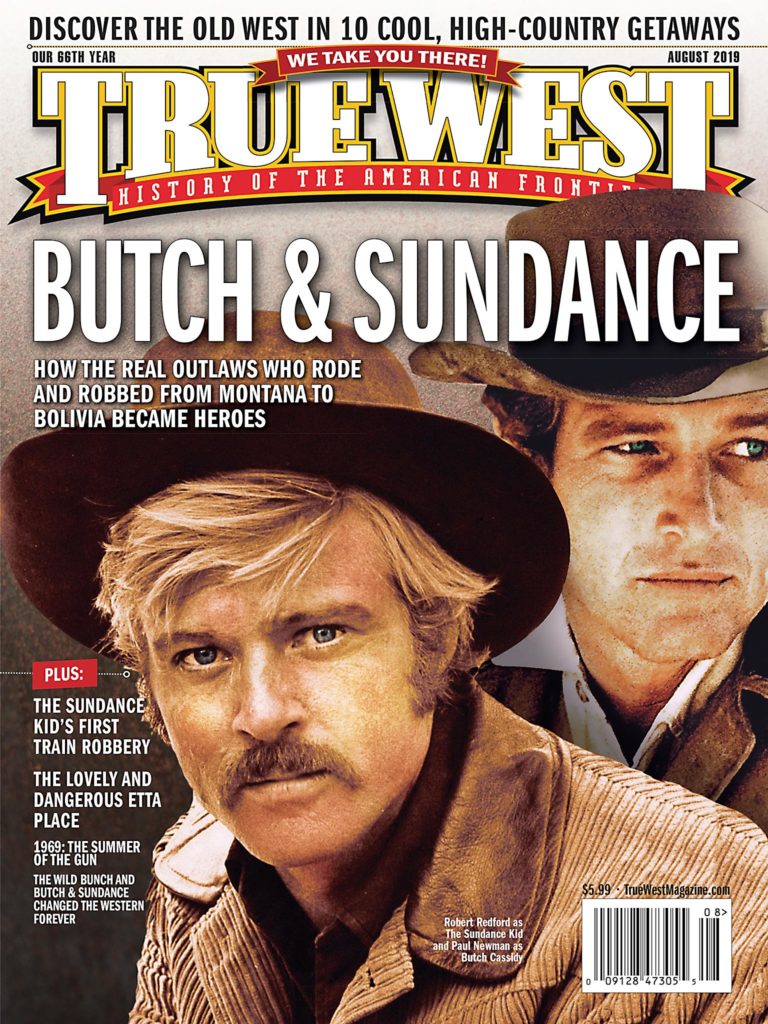
— Copyrighted by Paul D. Ernst —
According to one of the many legends of Butch Cassidy, the Sundance Kid and Etta Place in South America, two men and one woman at the table pulled their chairs into the limited shade offered by the thin limbs of casadensis trees. The isolated mountain village of San Vicente, Bolivia, was noisy and crowded with people, some of whom were loud and nearly shouting their conversations as they made their way from one shop to another. Wagons without springs pulled by half-wild horses passed by, and the rattle of the wheels over rocks and gravel added to the commotion.
Robert LeRoy Parker, better known as Butch Cassidy, leaned forward in his chair so his friends could hear him over the racket in the street. Harry Longabaugh, also known as the Sundance Kid, and his paramour, Ethel “Etta” Place, leaned in closely to listen. Butch was regaling the pair with stories of the South American riches yet to be had by those willing to take them. Bolivia’s plateaus were filled with silver, gold, copper and oil. Butch’s plan was to steal as much of the income made from the people who mined or drilled for the resources there as they could.
Having spent much of their lives in the United States holding up trains and robbing banks, Butch and the Sundance Kid considered absconding with mining companies’ payroll shipments to be a natural course of events. Butch reasoned that law enforcement in Bolivia was lacking, and their chances of getting away with the crime great. His point had been proven many times in the six years the outlaws had been in South America. Since arriving in Bolivia in 1902, the trio had robbed numerous banks, and intercepted one mule train after another carrying gold and paper money.
After migrating to the landlocked city, Butch, Sundance and Etta discussed another heist. A mule train rumored to be transporting a rich payroll was going to be in the area. It traveled a little-known route outside of San Vicente. Butch had a plan to overtake the train and meet back at the café shortly after the job was done. His cohorts in crime thought the idea had promise and were enthusiastic about the opportunity.
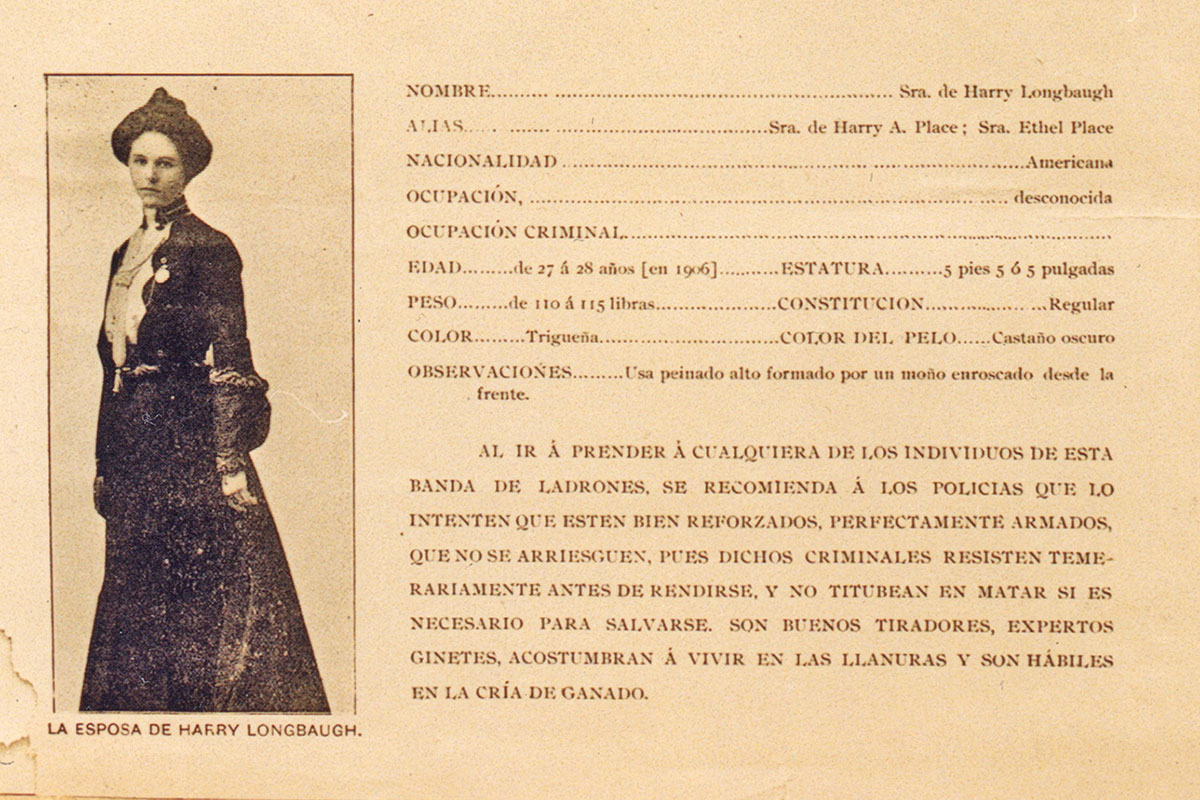
— Library of Congress, Pinkerton Collection —
Twenty-eight-year-old Etta smiled happily at her two companions as the conversation strayed from the execution of the job to the large amount they had stolen. As the cheerful three laughed and reminisced about their crime wave, several members of the Bolivian Army surrounded the area. A gun suddenly fired, and a bullet almost took off Butch’s head. The two men quickly dove under the table. Sundance pulled Etta down with him. Bullets ricocheted around them as they surveyed the scene looking for a place to take cover.
Crouching low, Butch led his cohorts inside the tiny, vacant café. Sundance dared look out an opened window and spotted the owner of the establishment talking to the police. Another series of bullets smacked into the walls above the three. The outlaws fired their own weapons indiscriminately into the collection of law enforcement officers that had gathered. For more than a day, Butch, Sundance and Etta fought being overtaken by authorities. Various accounts about the exchange between the bandits and police, from the July 7, 1908, edition of the Washington Post to the December 19, 1971, edition of the San Antonio Light newspapers, reported that the battle ended with the deaths of the outlaws in the spring of 1908.
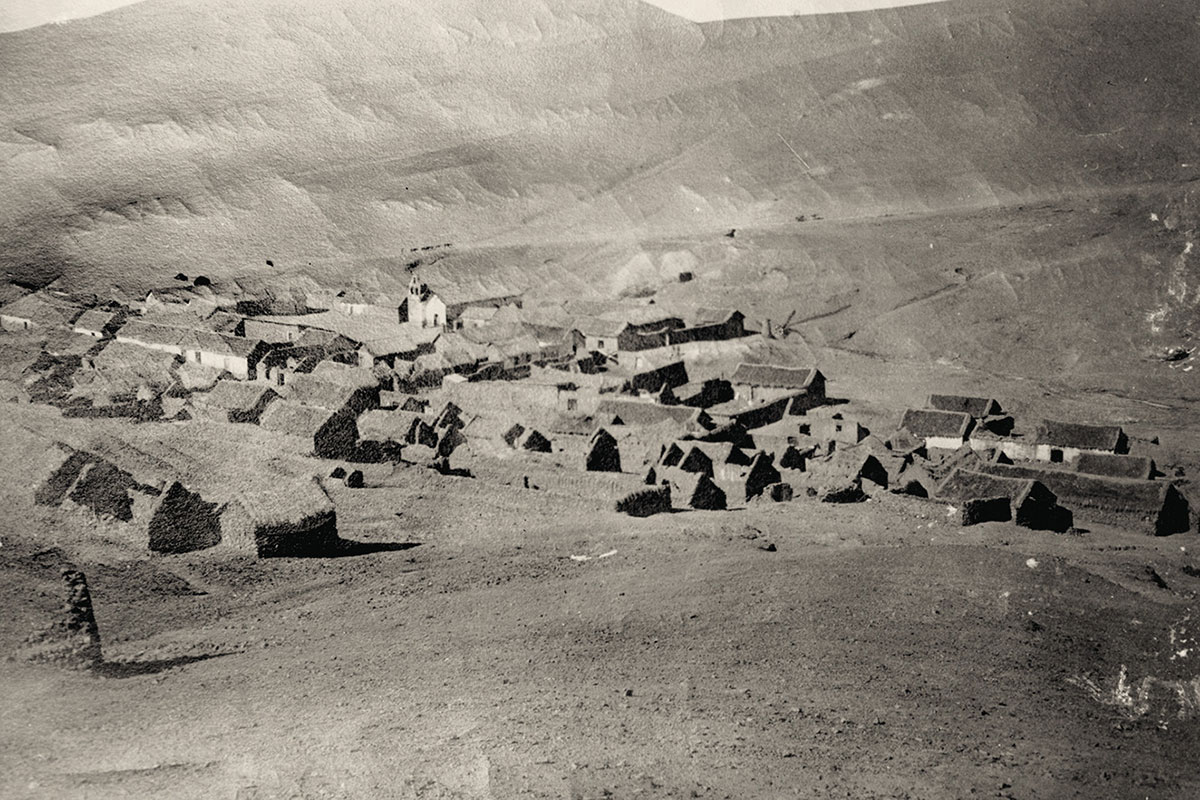
—True West Archives —
Etta was reportedly killed instantly from a bullet to the chest, and the Sundance Kid was critically wounded. Butch was shot several times, and, rather than allow himself and Sundance to be captured, he killed his dying friend then turned the gun on himself. Bolivian soldiers claim they found Sundance lying next to Etta. She was dressed in cowboy clothes, and a gold watch from a New York jewelry store was pinned on her blood-smeared, flannel shirt.
The Enduring Mystery
Historians and researchers debate this fanciful account of the final demise of Butch Cassidy, the Sundance Kid and Etta Place. According to the September 18, 1920, edition of the Seattle Post Intelligencer, “It’s likely no one will ever know what truly became of Cassidy and the Kid, but Etta is most certainly still alive.” Calling her a “master criminal,” the report contends she had been seen in Paris and Monte Carlo in the fall of 1915.
Files from the Pinkerton Agency (a detective agency established in 1850 that pursued Butch, Sundance and the gang they ran with known as the Wild Bunch at the behest of the Union Pacific Railroad Company) described Etta as having “classic good looks, approximately 5’4″ to 5’5″ in height, weighing between one hundred ten pounds and one hundred fifteen pounds, with a medium build, reddish-brown hair, and cold gray eyes.” Her date and place of birth are unknown, but the overall consensus was that she was from Utah or New York. She was well educated and an excellent horsewoman.
With the exception of the Pinkerton Agency files, there is little concrete information about Etta. History writer Edward Kirby noted in his book The Saga of Butch Cassidy and the Wild Bunch that she was “truly the mystery woman of the Wild Bunch story.”
The Pinkerton Agency files, as well as an article in the San Antonio Light newspaper, note that Etta became acquainted with Butch Cassidy and the Sundance Kid in 1899 while working for Madam Fannie Porter at a brothel in San Antonio. Michael Rutter, an author who has written extensively on the life of Etta Place, speculates that she might have been romantically involved with Butch before entering into a relationship with the Sundance Kid. The same sources, as well as the Sundance Kid’s family, report that Etta and Sundance married in December 1900.
Some historical accounts record that she became the “outside man” for the gang Butch organized with her husband. She was the one who held the horses and remained on guard while they robbed and stole. “She bore the brunt of attack by aroused citizens and was always the last in the getaway,” a San Antonio Light article reported.
There were dangerous desperados associated with the gang—men like Harvey Logan, alias Kid Curry and George “Flatnose” Currie, whose names were synonymous in certain parts of the country with robbery, cattle stealing and gun fighting. The gang had its headquarters in Grand Encampment, Wyoming, and rode hundreds of miles to strike for wealth in unsuspecting places. Montana, Wyoming, Texas, Arizona and Nevada all suffered at the hands of the Wild Bunch, and posses of skilled trackers and fighters rode themselves haggard looking for the thieves.
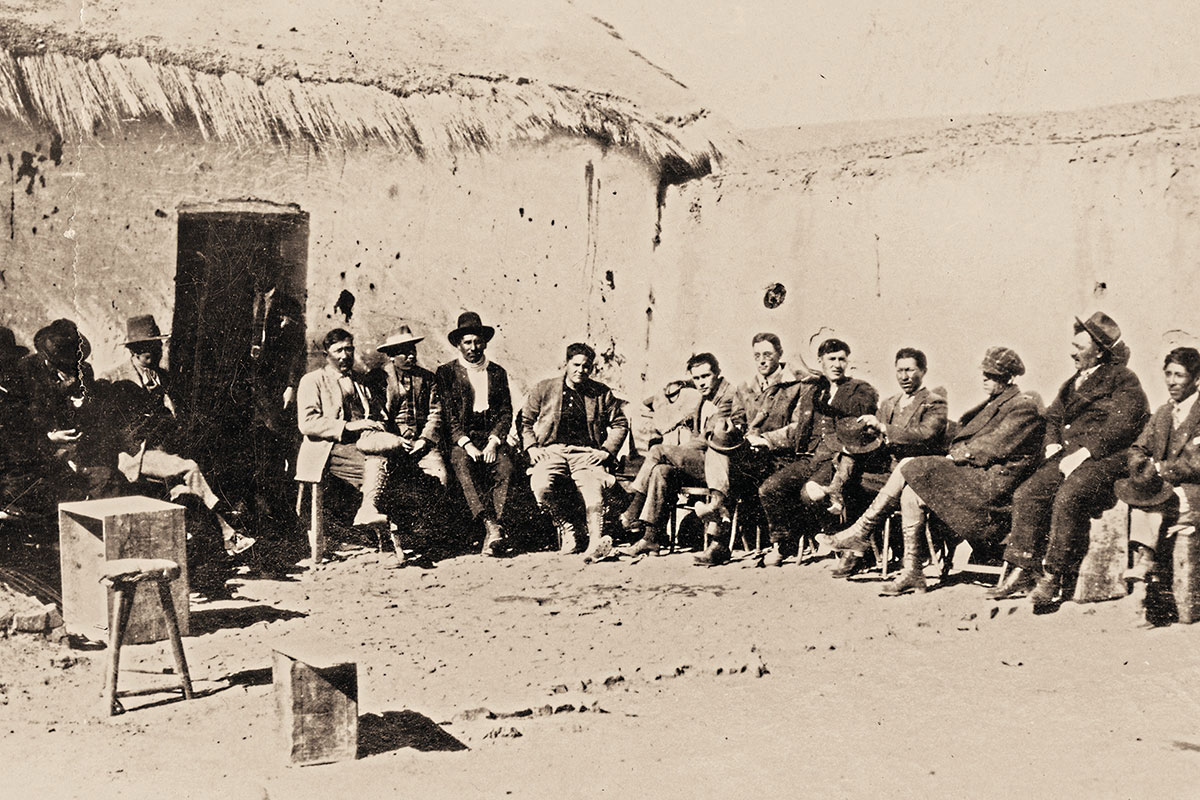
Bound for South America
By mid-January 1901, the Wild Bunch had gone their separate ways. With the exception of Butch, Sundance and Etta, who traveled to Pennsylvania and New York together, gang members confined themselves to the West. On February 1, 1901, Etta and Sundance posed together for a picture at DeYoung’s Photography Studio in New York after having made a purchase at Tiffany Jewelers. Sundance bought Etta a gold lapel watch. According to historians, on February 20, 1901, the husband and wife and Cassidy boarded the SS Herminius at New York’s Pier 32 under the aliases Mr. and Mrs. Harry Place and James Ryan. The ship was bound ship for Buenos Aires, Argentina. They moved to Cholila and began raising livestock.
Shortly after the trio arrived in South America, they opened a bank account with $12 thousand in gold notes. According to the February 19, 1950, edition of the American Weekly, Butch told the Buenos Aires bank president that he and his friends were afraid of thieves. When Robert Pinkerton, head of the Pinkerton Agency, learned what the outlaws had done he was outraged. “It shows how daring these people are,” he wrote his brother in 1905. “We hunt them in the mountains and the wilderness and they are in the midst of society….”
From March 1901 to June 1904, Etta may have made several trips back to the states to visit her family. According to the Pinkerton Agency file, Sundance periodically accompanied her. The couple was spotted in Saint Louis, Missouri, at the World’s Fair in 1904. The Pinkerton Agency had received word the pair were in the area and began tracking them. Etta and Sundance made it back to Argentina without interference from any law enforcement agency.
Life on the ranch in Cholila proved to be too mundane for Butch, Etta and Sundance. Reminiscing about their past adventures drove the former gang members back to their old habits. They robbed an English bank in the town of Patagonia, then rode into Chile where they committed a number of other daring robberies.
Their coffers filled with money again, the outlaws returned to Argentina and boldly went into Buenos Aires, had their picture taken, then sailed away to Europe, going to Paris where they bought an assortment of clothing. Etta had her clothes tailored, and adorned herself with expensive jewelry. The three visited museums, ate fine food and attended the opera. They traveled to Monte Carlo, took up residence on the Riviera, and generally lived an easy life for a while.
When the political climate in the region began to change, and with rumors that the Pinkerton Agency had picked up a lead on their whereabouts, the three felt it was best to leave the country. They disappeared in the night just as easily as they had done many times before. Pinkerton detectives raided the villa where the trio lived but found nothing that gave them a clue as to where the desperados were headed.
According to the San Antonio Light, three outlaws matching the description of Etta and her male cohorts were spotted at Cape Horn in early 1907. Although she was dressed in men’s clothing, there seemed to be no question from the witnesses who noticed the woman that it was Etta. Law enforcement was lax in the region, and the bandits again got away.
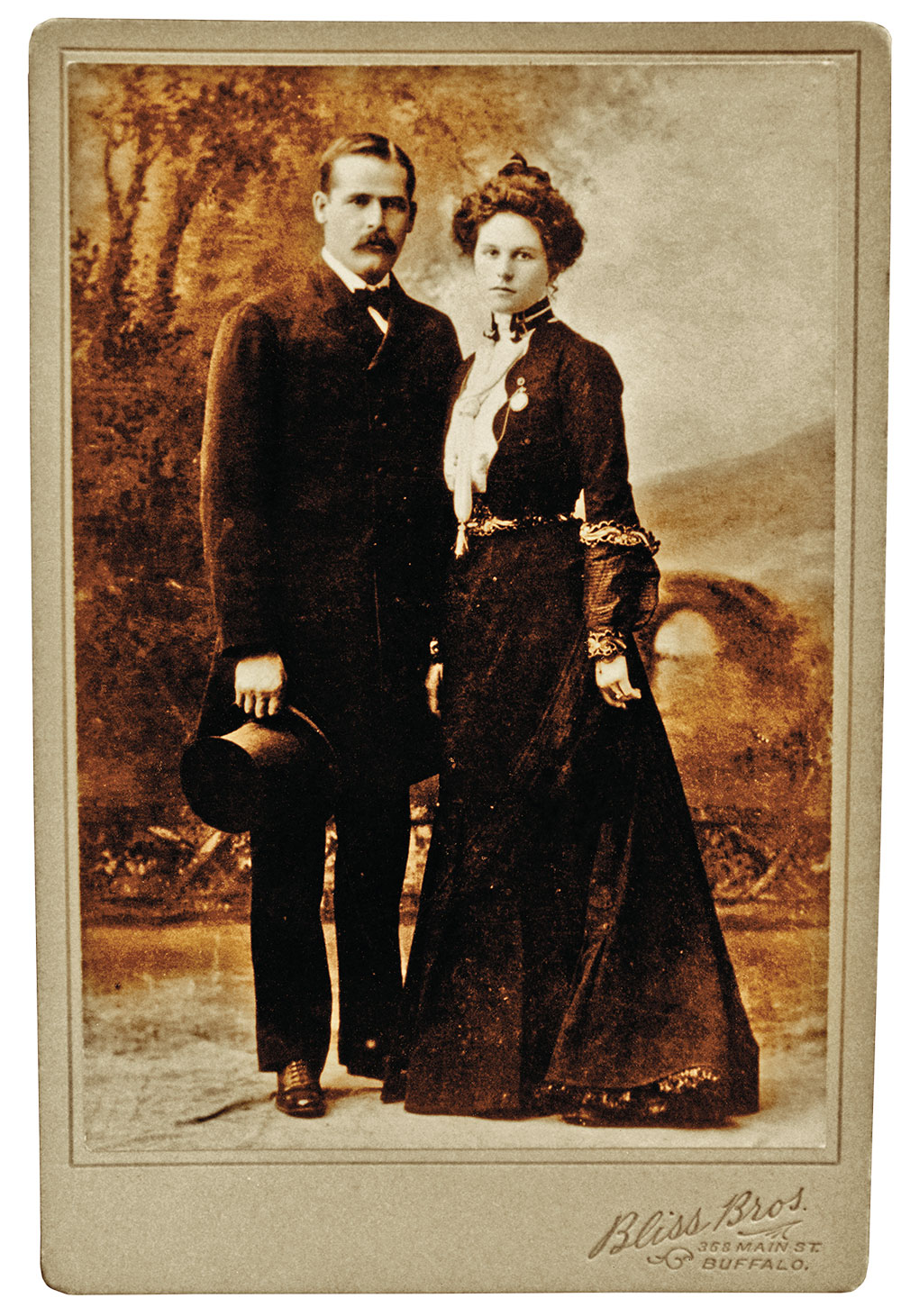
— All images True West archives unless otherwise noted —
Wild Speculation
Butch Cassidy’s sister, Lula Parker Betensen, told reporters from the Los Angeles Times on April 7, 1970, that the Bolivian Army did not kill her brother and Etta. “He visited me years after his reputed death,” she shared. “We heard from him from time to
time through the years until he died. It’s my secret where he’s buried.” According to Lula, Etta returned to America long before Butch and Sundance fought it out with the South American police. She did not know what became of the Sundance Kid, but Lula believed Etta settled in Denver and taught school.
Author and historian Richard Selcer wrote in his book, Hell’s Half Acre, that Etta could very well have traveled to Denver with her husband. Selcer’s research suggests she might have been suffering from acute appendicitis and needed emergency surgery. Selcer and other historians theorize that the end of Etta’s romantic life with the Sundance Kid came when he escorted her to a Denver hospital and left her there. He rode away in order to escape the possibility of being caught by the Pinkerton men, and the couple never saw one another again. Another account formulated by research done by journalist Jim Dullenty indicates that Etta moved to Marion, Oregon, after news that Sundance had been killed in Bolivia. She remarried and moved to Paraguay.
An article in the December 26, 1917, San Antonio Light reported that Etta Place died on December 15, 1917. Because the news could not be confirmed, police doubted the bandit had indeed passed away. They believed the story was circulated to conceal her identity. “She wanted to avoid capture,” New York law enforcement officials told the press. Some historians report that “Etta was supposedly killed by an unknown assailant.”
When and where Etta Place lived out the remainder of her life once the key leaders of the Wild Bunch were no more will probably always be left to conjecture. Historical documents do show that Etta and Sundance were dedicated to one another and that she was undeniably the “Queen of the Wild Bunch.”
Chris Enss is a New York Times bestselling author who writes about women of the Old West. She has written more than thirty books on the subject and is a Will Rogers Medallion Award-winner. “Queen of the Wild Bunch” is an excerpt from her book Love Lessons from the Old West: Wisdom from Wild Women (TwoDot, 2014).

